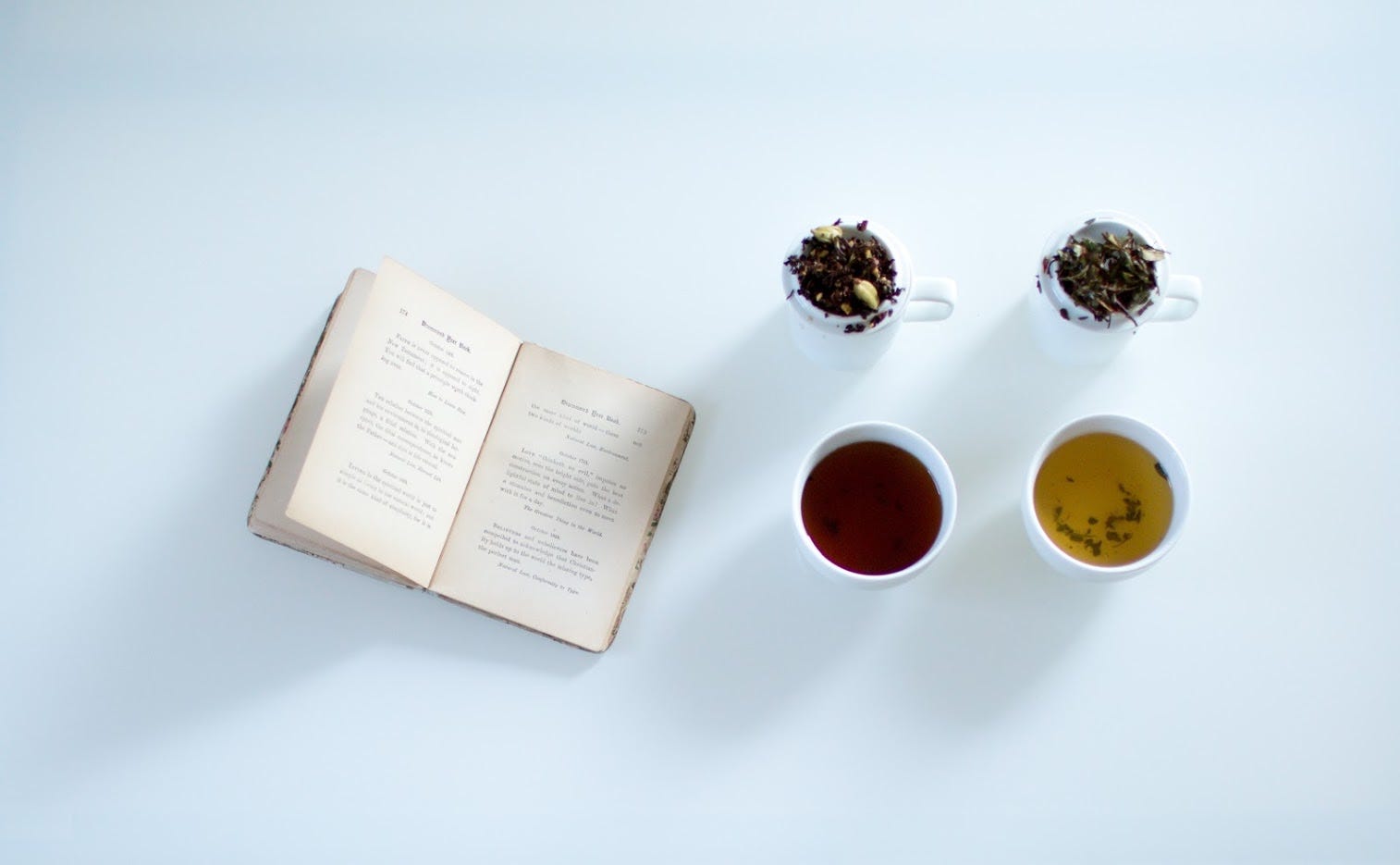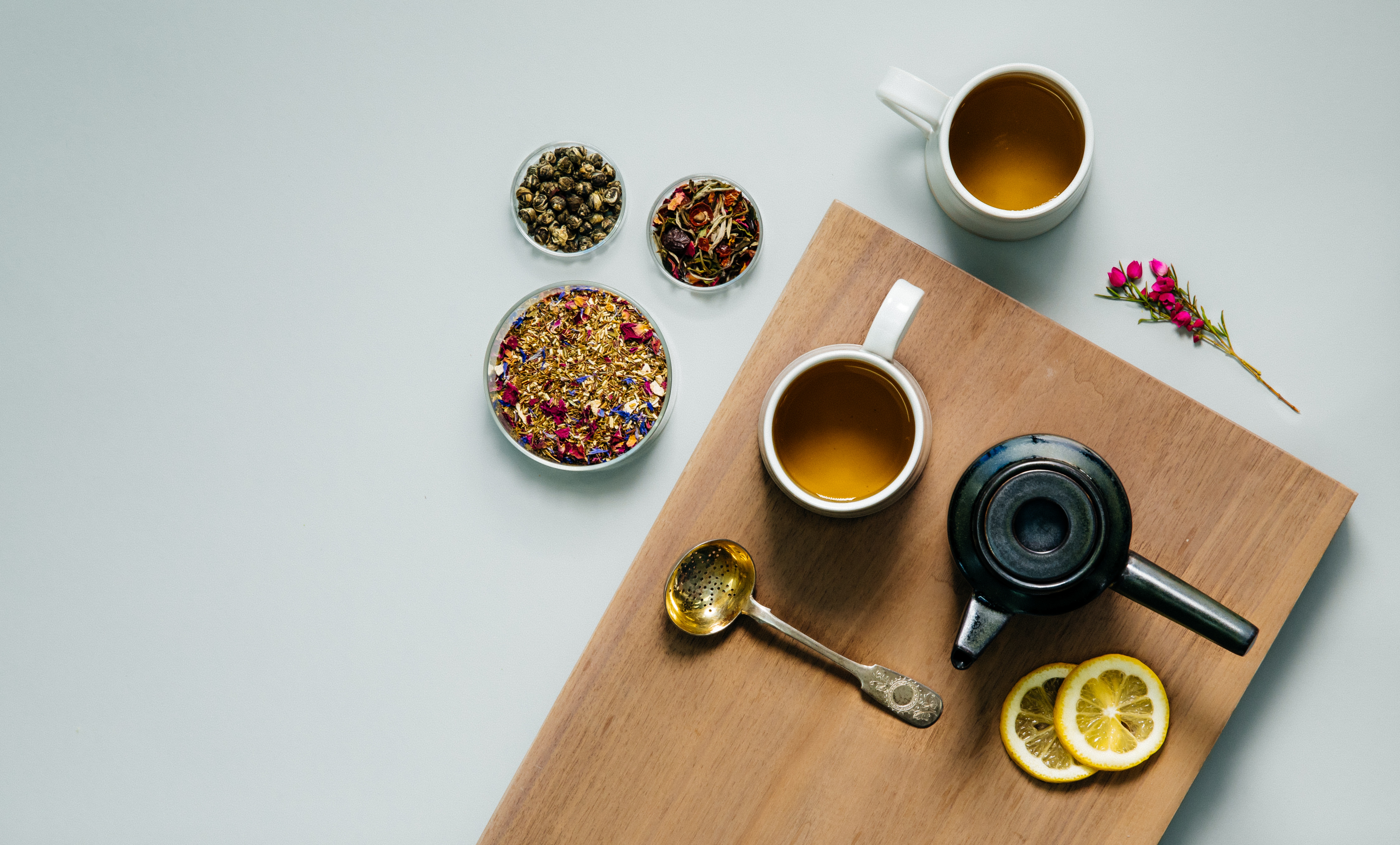There are five significant components found in tea, that when combined, constitute the entire experience of enjoying tea. These are:
- Essential Oils
- Polyphenols
- Nutrients
- Enzymes
- Methylxanthines

Essential oils found in tea provide tea’s wonderful and unique aromas. Black tea aroma has been found to have over 550 different odorants; while green tea has only 100 different odorants. This is because most volatile aromas are created during the oxidation process. Ever wonder why tea has so many different shapes; twisted, curled, balled, crumpled, flattened? These shapes were all developed with one goal in mind: to preserve the essential oils. We refer to it as the “agony of the leaf,” when describing the leaf’s unfurling in hot water and releasing its wonderful aromas and flavor into the water for us to enjoy.
We have all heard of polyphenols (antioxidants) providing the “health benefits” of tea; like EGCG in green teas or Theaflavins in black teas. However, many are surprised to hear that polyphenols are also what gives tea its mouthfeel. Mouthfeel is often confused with taste. Dryness of the mouth, puckering of the face, or the sensation of the tea dancing on the tongue are examples of teas wonderful mouthfeel.
Antioxidant is a broad term that covers many different types of substances. An antioxidant is a substance that prevents the oxidation of another substance. Free radicals are substances that can set off a chain reaction which can be damaging to cellular structures. Free radicals are a natural byproduct from metabolic processes that are believed to be responsible for aging and the development of several different diseases, such as cancer. Antioxidants block, or stop the oxidation process, thereby neutralizing free radicals and stopping the chain reaction before it starts. The method for quantifying the strength of antioxidants in food is through Oxygen Radical Absorbance Capacity (ORAC). ORAC is a measurement of how effectively the food neutralizes free radicals. The ORAC value of tea is between 1,128–1,253. This is on the same level as peppers, apricots, mangos and potatoes; but higher than eggplants, pineapples, orange juice and carrots.
There are small amounts of nutrients found in teas, like vitamins, minerals and amino acids. One of the most common amino acid found is L-theanine; which constitutes 60–70% of the amino acids found in green teas and gives this tea its brothy, umami taste.
Enzymes found within the cellular structure of the leaf (most importantly polyphenol oxidase enzymes) are responsible for changing the green leaf into many different colors through oxidation. The enzymes are released in the rolling room; often referred to as the nerve center of the factory. The goal of rolling is to break open the cell walls within the leaf and dismantle the cellular organelles within the leaf tissue. During this process two essential compounds are released: polyphenol oxidase from the cytoplasm and polyphenols from the cell vacuoles. Rolling is also responsible for shaping the leaf. Whether it be flattened, curled, semi-balled, twisted, etc. the leaf shape has been perfected over centuries to preserve the essential oils within the leaf.
During oxidation, color, flavor, and aroma, are produced, these are important to oxidized teas like black tea. Technically, oxidation starts the moment cell disruption occurs during plucking; however, during this processing step, oxidization is controlled to produce specific types of tea. Polyphenol oxidase enzyme, which was released during rolling, catalyzes the oxidation process with the chemicals in the tea and oxygen in the air. With the help of this enzyme, polyphenols quickly oxidize into a compound that further reacts with the amino acids in the leaf, creating melanin, which is brown in color. This enzymatic browning oxidation is critical to the development of aromas and flavor compounds found in partially oxidized oolongs and fully oxidized black teas. For green tea production, heat is immediately applied to de-enzyme the leaf to stop oxidation before it really has a chance to start.
Methylxanthines are a family of alkaloids that react within our body’s systems. The most common, and well known, is caffeine. Caffeine is a central nervous system, brain, and muscular stimulant; or what is referred to as the energy lift found in tea. Two uncommon methylxanthines that are just as important are Theophylline and Theobromine. Theophylline is a bronchodilator, a smooth muscle relaxant, and stimulant for your kidney, heart and respiratory system. Theobromine is a smooth muscle relaxant, and stimulant for your kidney, heart and respiratory system.
• • •
Art of Tea is an award winning purveyor of specialty and organic teas, based in Los Angeles, CA.
If you found this article helpful, please share it with coworkers, colleagues, and fellow lovers of tea.

